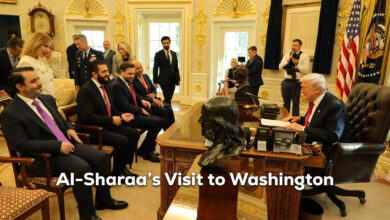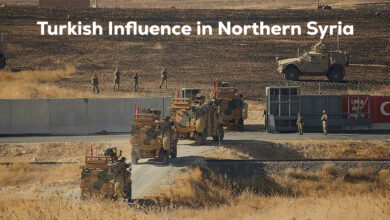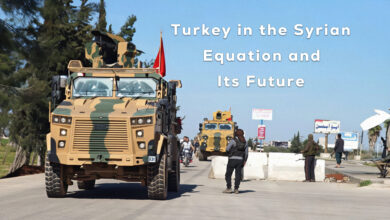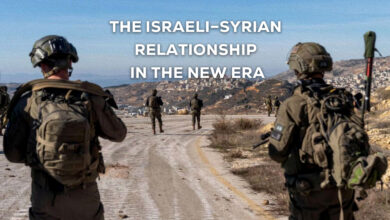The Syrian Coast and Unveiling the Mask
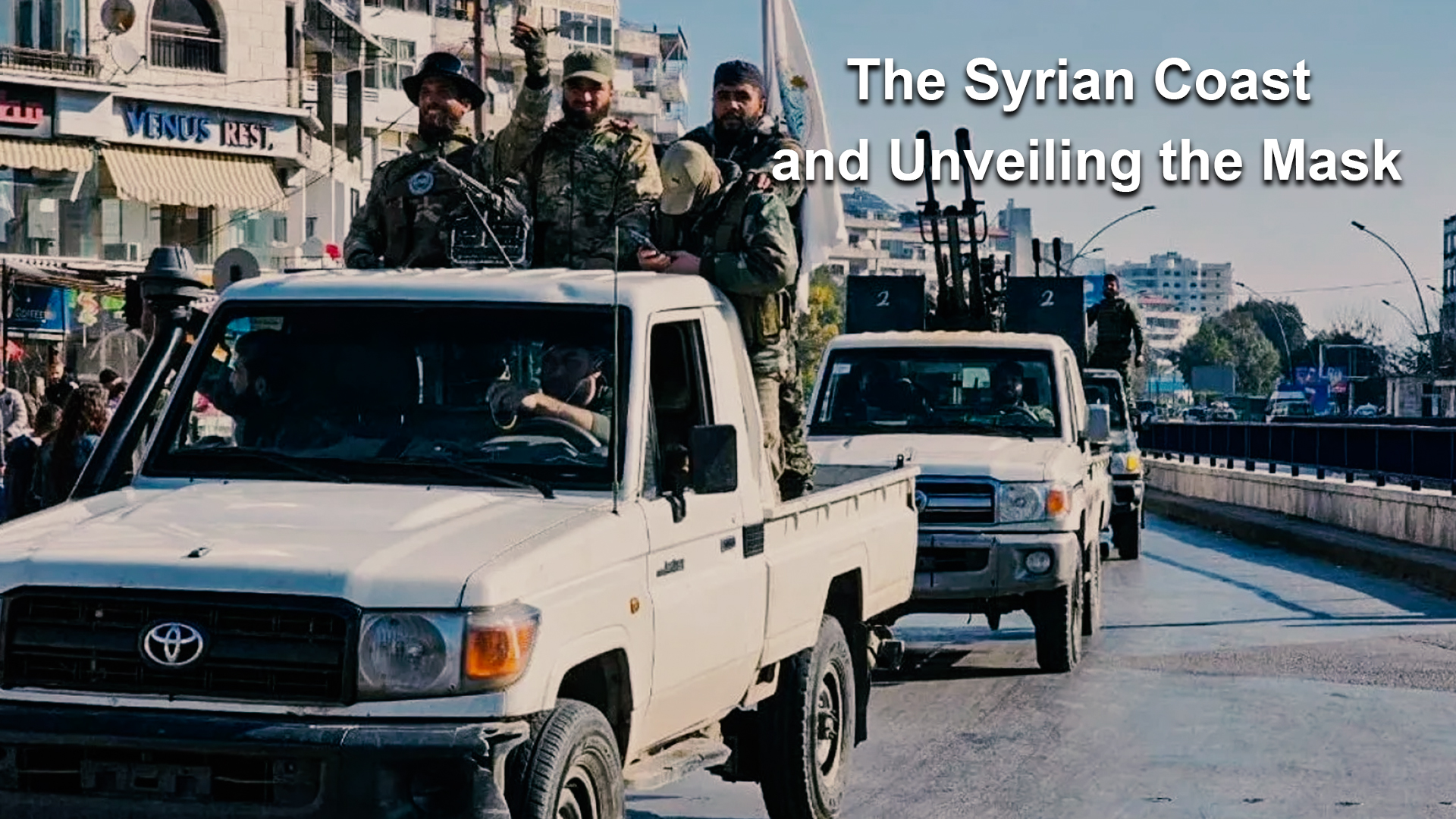
The Coastal region of Syria is witnessing military operations carried out by the Military Operations Administration and mercenaries of the Turkish occupation. According to them, this operation targets remnants of the former regime. One of the results of this operation is the killing of thousands of civilians who were executed in brutal ways.
After Hay’at Tahrir al-Sham (HTS) seized power in Damascus, it took over thorny and complex files resulting from the Syrian crisis over the course of fourteen years, which can only be resolved through national dialogue and rearranging the internal Syrian affairs. However, the approach taken by Ahmed al-Sharaa in resolving these files has further complicated them, especially when he moved his government, the “Salvation Government,” from Idlib to Damascus, appointed his military leaders as governors of Syrian cities, laid down incorrect foundations for building the new Syrian army, held a national conference of one color, and failed to break his ties with foreign entities. The events in the coast were his first test as interim president of the modern Syrian Republic.
What is happening on the Syrian coast is linked to internal errors and external agendas. This region is characterized as Syria’s gateway to the outside world, and it contains the Russian Hmeimim airbase and the Russian naval base in Tartus, and most of its inhabitants are from the Alawite sect. So, what are the reasons that led to this? And where are things heading there?
Internal reasons:
Undoubtedly, there are some elements of the remnants of the former regime in the coastal region, as it was the stronghold of the defunct regime. However, what is happening on the coast and the massacres committed against the Alawite sect cannot be linked to some elements of the remnants of the regime. Rather, it is related to the internal policy pursued by Ahmed al-Sharaa in managing the country after the fall of the defunct regime. This policy has proven its failure by all accounts, as al-Sharaa has no ability to control his armed factions (leaders or individuals) or even hold them accountable for the violations and massacres committed by those factions against the Alawite sect. One of the most prominent mistakes – if one may say so – that al-Sharaa made in his internal policy is:
1- Formation of the New Syrian Army: Instead of forming a national Syrian army, al-Sharaa worked to incorporate factions with a long history of killing, looting, and kidnapping—”al-Hamzat, al-Amshat, and Ahrar al-Sharqiya”—along with radical Islamic factions to form the nucleus of the New Syrian Army. Moreover, those factions that claimed to dissolve themselves and join the New Syrian Army have remained as they were, and there is no military authority over them. Rather, the loyalty of these factions’ members remains with their leaders. Consequently, these factions remain linked to foreign agendas, which poses a threat to Syria and its civil peace. The ongoing events or massacres committed in the coastal region, such as killings, kidnappings, and looting carried out by these factions, are done in the name of the New Syrian Army. Therefore, Ahmed al-Sharaa’s policy in forming such an army puts him in the dock. There is no difference between this army and the army of the defunct regime as long as it is linked to specific individuals and works to kill the Syrian people instead of being their shield and protector.
2- National Dialogue Conference: Which was characterized by a single color, even the members of the committee in charge of the conference have several questions and are not acceptable to the Syrian street. Moreover, the exclusion of parties, forces, and national figures from the national dialogue has left the Syrian street with many questions about the goal of this conference and the intentions of the new regime. This has created a sense of frustration among the Syrian street “components, parties, and national forces” and generated a state of distrust in this new regime.
3- Failure to take into account the conditions and particularities of the Syrian regions after the Syrian crisis: Regardless of the areas of the Autonomous Administration in northern and eastern Syria and its military force “Syrian Democratic Forces” and to some extent Suwayda, the rest of the regions were linked to the regime. With the fall of the regime, the arena remained devoid of any force working to establish security in those areas, even if they were under the umbrella of the new regime. The new regime was supposed to form new security units from the people of the region to maintain security and stability, as an initial step in light of the results of the Syrian crisis, especially sectarian and ethnic tensions, rather than bringing in parties linked to foreign agendas or radical factions with a bloody history and grudges against certain sects and working according to a foreign agenda. This is one of the reasons that prompted Suwayda to form a military council to oversee the security and stability of Suwayda and its countryside. Otherwise, its fate might have been similar to that of the Syrian coast.
4- The rapid fall of the defunct regime did not give the Alawite community the opportunity to form its own administration, whether political or military, to stand up to any abuses against the people of the region by factions that harbor hatred and animosity towards that community.
And other factors that have brought the country to this level of killing, kidnapping, looting, and fabricating crises. The internal policy pursued by Ahmed al-Sharaa was not at the level of a country that had been in crisis for fourteen years and produced many negative results that require a special policy based on involving all Syrian components, forces, parties, and national figures in the administration of the country, instead of transferring the Idlib government to rule Syria completely and insisting on the central system.
External reasons:
There is no doubt that Syria is part of a “New Middle East” map being drawn by the global system. Middle Eastern countries like Turkey and Iran are trying to possess strong leverage that can be bargained with in the future to protect their regimes from collapse. Therefore, each country is trying to rearrange its cards amidst the ambiguity of the scene in the Middle East, and the emergence of Israel as a pivotal state with its own agenda and strong support from the United States in the region. This is in addition to Russia, which is trying to maintain its presence in Syria. All of this poses a major challenge to al-Sharaa, which already has strong relations with the Turkish occupying state, and fears the reactions of the United States and Israel, which may reflect its ability to strike a balance between these parties and spare Syria new crises.
The International and Regional Agenda in Syria:
Russia:
Russia is considered one of the defeated countries in the Syrian file after the fall of its ally, al-Assad. It is trying to maintain Syria as a historical ally and preserve its military bases (“Hmeimim Air Base and Tartus Naval Base, in addition to its base in Qamishli”). However, it still seems to be adhering to the Astana axis (“Iran and Turkey”) and is ingratiating itself with the new regime in Damascus. But on the other hand, it is coordinating with Turkey and Iran in Syria, and the shuttle visit of its foreign minister to Tehran and Ankara comes to redraw a new policy in Syria. Through its cooperation with these countries, it is trying to preserve Syria as an allied country, even if it does not include the entire Syrian geography. What matters to it is a “useful Syria.” According to Russia’s strategy regarding Syria, the coastal region constitutes a major part of a “useful Syria.” It may also exploit the massacres committed against the Alawite sect, as well as the fact that a large number of members of that sect are taking refuge in the Russian base from the factions of the New Syrian Army, to impose its presence in the coastal region.
Iran:
Alongside Russia, Iran is considered one of the defeated countries in the Syrian file, even the biggest loser. It wants to reposition itself on the Syrian coast by winning over the Alawite community, similar to the Shiites in Lebanon and the Houthis in Yemen. It has tried to woo the new regime in Damascus without success, and the events on the coast – even if Iran had no hand in them – have made it hesitant to court the regime. Perhaps it will change its policy by supporting the Alawite community on the coast, especially since the Syrian coast region borders Lebanon, and therefore, there is a possibility of communication between Hezbollah and the Alawite community.
Turkey:
It sees itself as the biggest winner in the Syrian issue, due to its close relationship with HTS and its control over its mercenaries and radical Islamic factions. Therefore, it is trying to expand its influence in northern Syria to include the Syrian coast, as it has economic ambitions in the gas-rich Syrian coast, and to stop or prevent trade routes from crossing to Europe via Syrian ports. Creating crises in Syria may serve its plans in Syria and the region by forming a regional “Turkish-Syrian-Iraqi-Jordanian” alliance under the pretext – as it describes it – of resolving the Syrian crisis and combating terrorism; all of this in order to take over the counter-terrorism file from the United States and dissolve the partnership between the international coalition and the Syrian Democratic Forces to strike the Autonomous Administration and the democratic nation project, which constitutes the cornerstone towards a democratic and pluralistic Syria.
Indeed, Ahmed al-Sharaa’s relationship with the Turkish occupation state, and the latter’s control over the armed factions in Syria that operate according to its agenda, constitute a major obstacle to the establishment of a democratic system. Neutralizing Syria from Turkish ambitions and agendas will be a major leap towards finding solutions to many thorny issues and towards a new Syria.
Israel:
After October 7th, the direct Israeli role in the Middle East emerged, and the concentration of countries – with the exception of Russia – in Syria constitutes a threat to its national security. Therefore, we find an “Israeli-Turkish-Iranian” conflict in Syria. Israeli statements to protect the Druze in southern Syria are part of its national security. The Syrian coast also constitutes significant economic importance for Israel in the near future, by including Syria in the “Eastern Mediterranean Gas Forum” to transport gas to Europe and prevent Turkey from concluding any agreements to demarcate maritime borders with the new regime. This is in addition to the significant Turkish influence over radical Islamic groups in Syria, which constitutes the greatest threat to Israel and its national security.
This is in addition to the American and Western interests in Syria as a gateway for energy transfer to Europe and the possibility of the United States expanding its economic project in the Arab Gulf region to include Syria.
The adherence or inability of al-Sharaa to emerge from under the Turkish cloak, and its inability to achieve an international balance in Syria, puts it in front of new crises. One of the main reasons for the Syrian crisis was the failure of the defunct Assad regime to achieve an international balance or neutralize Syria, and its leaning towards the Iranian project instead of the Western-Qatari project to transport gas to Europe.
The events on the coast and the resulting genocide against the Alawite sect have revealed the weakness and fragility of the new regime, and its inability to control the military factions that are said to have dissolved themselves and joined the Syrian army, but the reality shows the opposite. Also, the statements – whether from the interim President Ahmed al-Sharaa or from officials – were not commensurate with the responsibility of a government working to protect and care for the interests of the Syrian people and preserve the Syrian fabric. Their comparison of the massacres committed against the Alawite sect in the coastal region with the massacres of the defunct regime, and their claim that the violations occurring on the coast of killing, kidnapping, and looting are merely individual excesses and not systematic, is a distortion of the facts. Therefore, those statements have no connection to reality. Rather, the policy pursued by the new regime is similar to the policy of the defunct regime, and the massacres committed against the Alawite sect have revealed it. The continuation of al-Sharaa and his government on this path will lead Syria towards sectarian violence (Sunni-Alawite), and it is not unlikely that this government will cause a sectarian conflict in the future (Kurdish-Arab) or even (Sunni-Druze), thus plunging Syria into a spiral of sectarian conflicts as long as this regime remains on its current path. As for the Security Council session that will be held for Syria, it cannot be ruled out that all its members will reach a consensus on condemning the massacres committed against the Alawite sect and holding the perpetrators of those massacres accountable.

